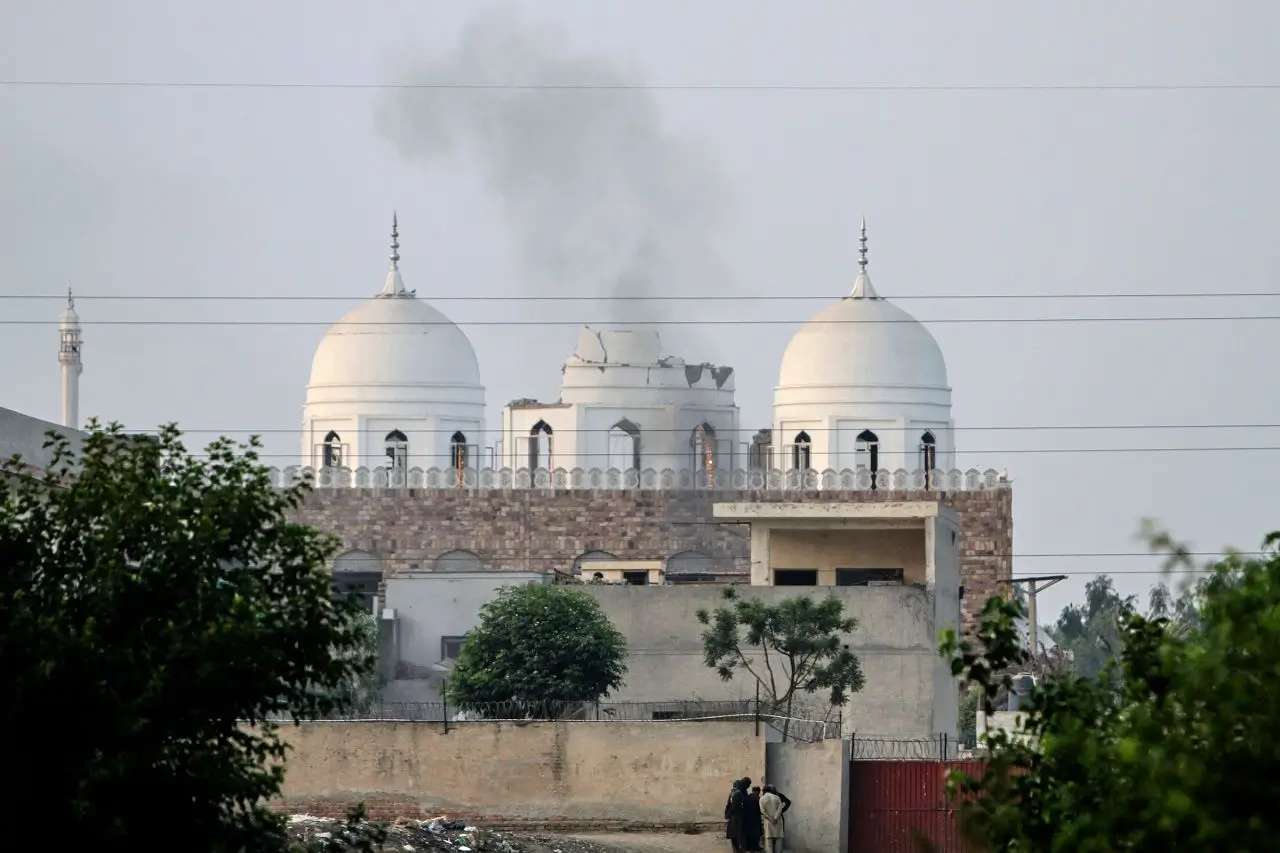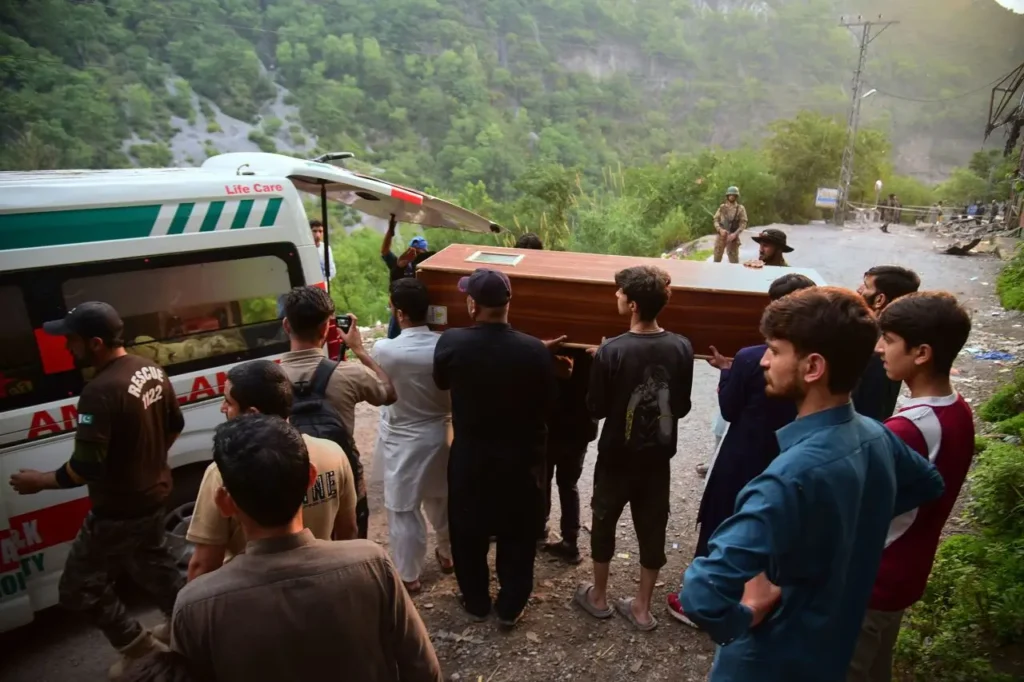India-Pakistan war: Operation Sindoor Sparks Global Concern

- Washington D.C: India Pakistan conflict has erupted into one of its deadliest chapters in 2025 with Operation Sindoor, India’s military strikes targeting alleged terrorist infrastructure across Pakistan and Pakistan-administered Kashmir. Launched in response to a terror attack in Indian-administered Kashmir, the operation has left a trail of civilian deaths, shattered communities, and fears of an India Pakistan war. This article explores the human cost, the reasons behind India’s actions, and the global outcry, offering a deep dive into why India and Pakistan are fighting. With real-time insights and a focus on the humanitarian toll, we uncover the stakes of this volatile crisis.
Roots of the India Pakistan Conflict
Decades of Division
India and Pakistan conflict traces back to 1947, when British colonial rule ended, partitioning the subcontinent into India and Pakistan. The disputed region of Kashmir, claimed by both nations, has fueled three wars and countless skirmishes. The Line of Control (LoC), dividing Indian-administered and Pakistan-administered Kashmir, is a flashpoint for violence. A 2003 ceasefire, reaffirmed in 2021, brought relative calm, but unresolved issues—territorial claims, cross-border militancy, and political rhetoric—keep tensions simmering.
The Pahalgam Massacre
On April 22, 2025, a horrific attack in Pahalgam, Indian-administered Kashmir, killed 26 Hindu tourists, including women and children. India blamed Lashkar-e-Taiba (LeT) and Jaish-e-Mohammed (JeM), terrorist groups allegedly operating from Pakistan. The attack, dubbed the “Pahalgam Massacre,” ignited public fury in India, with images of grieving families dominating media. Indian Foreign Secretary Vikram Misri accused Pakistan of sheltering these groups, demanding action. Pakistan’s denial of involvement deepened the rift, setting the stage for Operation Sindoor.
Operation Sindoor
What is Operation Sindoor?
Operation Sindoor, launched on May 7, 2025, at 1:05 a.m. local time, was India’s response to the Pahalgam attack. Named after the red vermilion powder worn by married Hindu women—a nod to the widows left by the massacre—the operation targeted nine alleged terrorist sites in Pakistan and Pakistan-administered Kashmir. The Indian Air Force, deploying Rafale jets and Scalp missiles, struck locations in Bahawalpur, Muridke, Muzaffarabad, Kotli, Bagh, and Ahmadpur East. Colonel Sofiya Qureshi called the 25-minute operation “precise,” claiming no military targets were hit.
Targets and Tactics
India’s strikes focused on:
- Markaz Subhan Allah, Bahawalpur: A JeM facility.
- Markaz Taiba, Muridke: LeT’s headquarters near Lahore.
- Syedna Bilal Camp, Muzaffarabad: A JeM training site.
- Markaz Abbas, Kotli: Linked to JeM.
- Shawai Nalla Camp, Muzaffarabad: An LeT base.
The operation used advanced munitions, including loitering drones, based on intelligence pinpointing these sites as terrorist hubs. Indian officials showcased footage of the strikes, claiming they disrupted LeT and JeM operations. However, the strikes’ impact on civilian areas has drawn sharp criticism.
Why Did India Attack Pakistan?
India justified Operation Sindoor as a preemptive strike against terrorism, citing Pakistan’s failure to act after the Pahalgam attack. Misri accused Pakistan of supporting Kashmiri militant fighters, alleging the targeted sites were planning further attacks. The operation, approved by Prime Minister Narendra Modi, aimed to deliver “justice” for the 26 victims, leveraging the emotional resonance of the Sindoor name to rally domestic support.
Human Tragedy: India’s Strikes Devastate Communities
Indian missiles tore through cities and sacred spaces across Pakistan and Pakistan-administered Kashmir overnight, leaving a trail of heartbreak and destruction. In one of the most severe escalations in recent years, India’s Operation Sindoor struck six locations—Bahawalpur, Muridke, Muzaffarabad, Kotli, Bagh, and Ahmadpur East—many bustling with civilian life. The attacks killed innocent people, including children, and desecrated mosques, shattering communities and igniting outrage, according to Pakistani officials.
Lieutenant General Ahmed Sharif Chaudhry, Pakistan’s military spokesperson, detailed the civilian toll at a pre-dawn press conference in Rawalpindi. Among the victims were a 3-year-old girl in Ahmadpur East, her tiny body found amidst rubble, and a 16-year-old girl and 18-year-old boy in Kotli, their dreams cut short in Pakistan-administered Kashmir. In Muridke, near Lahore, a father was killed, leaving his family to mourn beside a shattered home. Dozens were wounded, their cries echoing through hospitals overwhelmed by the injured. Two people remain missing, their fates uncertain as families cling to hope.
The Indian army, deploying a barrage of missiles and drones, left 24 impact sites, including the Bilal Mosque in Muzaffarabad and the Subhanullah Mosque in Bahawalpur, where worshippers had gathered for late-night prayers. Debris littered streets, and power outages plunged neighborhoods into darkness, amplifying panic. Images from the aftermath—shared widely on X—show grieving mothers, bloodied children, and crumpled buildings, a stark testament to the human cost of India’s actions. Pakistan’s Chaudhry condemned the strikes as “reckless,” accusing India of disregarding civilian lives in its pursuit of alleged terrorists.
The devastation exposes a troubling disregard for humanity in India’s strategy. By targeting densely populated areas and sacred sites, India’s strikes inflicted maximum suffering, undermining claims of “precision.” The loss of children and the destruction of mosques have sparked global condemnation, with many questioning why India prioritized military might over innocent lives. As families sift through wreckage, the world watches, grappling with the moral weight of this tragedy.
Pakistan responded with fierce resolve, claiming to have shot down five Indian warplanes, including three Rafale jets, and several drones. The skies over Kashmir roared with defiance, signaling Pakistan’s refusal to bow to India’s aggression.
Pakistan’s Counteraction and Escalation
Military Response
Pakistan’s air force went on high alert, with Prime Minister Shehbaz Sharif vowing a “robust retaliation.” The downing of Indian jets, if confirmed, marks a significant escalation, showcasing Pakistan’s advanced air defenses. Cross-border shelling along the LoC killed three Indian civilians, including a schoolteacher, in Indian-administered Kashmir, per the Indian Army. Pakistan’s military condemned India’s strikes as an “act of war,” raising fears of a broader India-Pakistan war.
Humanitarian Fallout
In Muzaffarabad, power outages and damaged infrastructure left hospitals struggling to treat the wounded. In Bahawalpur, the Subhanullah Mosque’s destruction fueled protests, with locals decrying the attack on their faith. Schools closed across affected areas, and thousands fled border zones, fearing further strikes. The humanitarian crisis deepened as aid groups scrambled to provide food and medical supplies.
Global Reactions
United States and the UN
US President Donald Trump labeled the conflict “a shame,” urging de-escalation to prevent a nuclear crisis. Speaking on May 6, 2025, he noted the centuries-long India-Pakistan rivalry but stressed, “This needs to end quickly.” The United Nations, via Secretary-General Antonio Guterres, expressed “deep concern” over India’s missile attacks, warning that “the world cannot afford” an India-Pakistan war. Both called for urgent dialogue.
China’s Delicate Balancing Act
China, Pakistan’s closest ally, expressed regret over the strikes and urged restraint. Foreign Minister Wang Yi, in a May 27, 2025, call with Pakistan’s Ishaq Dar, affirmed support for Pakistan’s sovereignty while advocating calm to protect China’s Belt and Road investments. China’s ties with India, strained by a border dispute, complicate its role as a mediator. Beijing’s arms supplies to Pakistan, comprising 81% of its weapons imports, underscore their “ironclad” bond.
Regional and Media Voices
Türkiye’s Foreign Minister Hakan Fidan discussed the crisis with Dar, reflecting regional alarm. Media coverage varies: Times of India and The Hindu frame Operation Sindoor as a bold anti-terror move, while Pakistan’s Dawn and Geo News highlight civilian suffering. BBC News and Al Jazeera offer balanced reports, emphasizing the humanitarian toll. On X, hashtags like #IndiaPakWar and #Kashmir trend, with users sharing images of destruction and pleas for peace

Human Stories: Voices from the Crisis
In Kotli, a mother wept beside her daughter’s body, killed in the mosque strike. In Wuyan, Indian-administered Kashmir, an unidentified aircraft crash—possibly linked to the conflict—sparked panic, though no injuries were reported. Locals described a “deafening explosion” as wreckage landed near a school. These stories, amplified on X, humanize the India-Pakistan conflict, revealing the shared pain across borders. Aid workers in Muzaffarabad report children too traumatized to speak, their futures uncertain.
Why Are India and Pakistan Fighting?
The India and Pakistan conflict stems from:
- Kashmir’s Division: Both nations claim the region, fueling militancy and military standoffs.
- Terrorism Disputes: India accuses Pakistan of supporting Kashmiri militant fighters like LeT and JeM, responsible for attacks like Pahalgam.
- Domestic Pressures: India’s government faced public demand for action post-Pahalgam, with Sindoor symbolizing retribution.
- Nuclear Stakes: Both nations’ nuclear arsenals amplify global fears of escalation.
The Sindoor name, evoking widowed women, underscores India’s narrative of vengeance, but the civilian toll challenges its moral framing.
Media and Public Perception
Indian media, including NDTV, portray Operation Sindoor as a triumph over terrorism, with headlines like “India Strikes Back.” Pakistani outlets, facing censorship, focus on civilian losses, calling India’s actions “barbaric.” International media strive for neutrality, but polarized narratives dominate X, where Indian users celebrate military prowess and Pakistani users share images of grieving families. This divide deepens mistrust, complicating peace efforts.
Risks and Resolutions
Escalation Risks
The India Pakistan war threat grows with Pakistan’s promised retaliation and ongoing LoC clashes. The alleged downing of Rafale jets, prized assets of India’s air force, could provoke further strikes. Analysts warn that miscalculations could spiral into a nuclear confrontation, with catastrophic global consequences.
Diplomatic Hopes
The UN and global powers urge talks, but India’s S. Jaishankar remains defiant, demanding “zero tolerance for terrorism.” Pakistan’s Dar seeks international support, framing India as the aggressor. Neutral mediators like Türkiye or the UN could facilitate dialogue, but trust remains elusive. Historical peace efforts, like the 2003 ceasefire, offer faint hope.
Long-Term Impact
The India-Pakistan conflict could disrupt South Asia’s stability, strain China’s regional influence, and affect global trade. In Kashmir, the humanitarian crisis worsens, with displaced families and closed schools. Addressing root causes—terrorism, Kashmir’s status, and mutual distrust—requires bold diplomacy, but political will is scarce.
Summary
The India-Pakistan conflict, intensified by Operation Sindoor, has plunged the region into crisis. India’s strikes, aimed at terrorists, have instead killed innocents, destroyed sacred sites, and pushed two nuclear powers closer to war. The world watches with bated breath, urging restraint and compassion. As families mourn and communities rebuild, the need for peace grows urgent. Share your thoughts below and follow us on X for the latest India-Pakistan news
FAQ
What is Operation Sindoor?
Operation Sindoor is India’s May 7, 2025, military operation targeting nine terrorist sites in Pakistan and Pakistan-administered Kashmir, named after the vermilion powder symbolizing widows from the Pahalgam attack.
Why did India attack Pakistan?
India struck to dismantle terrorist infrastructure linked to the April 2025 Pahalgam attack, accusing Pakistan of inaction against groups like LeT and JeM.
How many civilians were killed?
Pakistan reported 26 civilian deaths and 46 injuries, including children, while India confirmed three civilian deaths from Pakistani shelling.
What does Sindoor symbolize?
Sindoor, a red powder worn by married Hindu women, reflects the widows left by the Pahalgam attack, emphasizing India’s emotional narrative.
Are India and Pakistan at war?
No formal war exists, but the strikes and retaliation mark the worst escalation in decades, raising fears of an India-Pakistan war.



